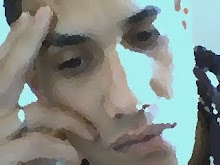Acupressure treatment works on the same basic principles as acupuncture, both of which are practiced in Traditional Chinese Medicine, the latter uses needles while the former uses touch. Each technique has the objective of stimulating specific points along the body's meridians, or energy pathways through which the life force known as "Qi" flows that maintains the health of the vital organs.
Numerous studies have demonstrated how effective this method is for healing and relieving pain. It affects the body by increasing blood flow and reducing muscle tension and the mind by promoting inner peace and increasing energy. It is considered a holistic approach since it has an impact on the whole person.
Meridians extend from the head down to the heels and are understood to connect the outside of the body to its inner workings. According to Traditional Chinese Medicine, there are more than 800 distinct energy points along these pathways. Although not officially accepted by Western medicine, it has been proven that these points are often found at major autonomic nervous crossways.
Whereas acupuncturists use needles to stimulate certain points, acupressure practitioners use their hands, feet, elbows, or some devices made for this purpose. Examples of acupressure tools include the foot roller, acuball, and energy roller. A session is usually about an hour long, and normally several will be needed to achieve the best results. The patient should drink warm water afterwards to flush away any toxins that were released.
The primary aim of this treatment is to bring about balance in the body's yin and yang (positive and negative) energy forces. While the evidence indicates that it helps reverse illness and alleviate pain it is still not widely accepted in mainstream medicine, which claims its effects to be the result of physical reactions such as the release of endorphins.
It is also effective as a preventative approach which can curb certain types of pain and imbalance before they can escalate into a full-blown condition. People can even learn how to perform some basic acupressure techniques on their own which may be used to relieve issues like headaches, neck pain, arthritis, back and muscle aches, eyestrain, and sinus problems. It also promotes relaxation and relieves stress which can ultimately improve one's immunity and encourage healing.
Several studies indicate the effectiveness of acupressure in the prevention and treatment of nausea and vomiting, due to such causes as motion sickness or chemotherapy, and there have been wristbands designed for this purpose. Research also provides evidence that acupressure releases pain-killing endorphins which combat many types of pain, headaches, and arthritis and also boost energy levels and improve one's mood.
There are some patients who have to exercise caution and consult a doctor when it comes to receiving acupressure treatment, namely those with spinal injuries, rheumatoid arthritis, varicose veins, or cancer, since there can sometimes be a contraindication with these illnesses. It can also be risky for pregnant women since it can cause contractions in some instances. Verifying that the practitioner is certified and licensed is always a must to ensure a safe experience.
Numerous studies have demonstrated how effective this method is for healing and relieving pain. It affects the body by increasing blood flow and reducing muscle tension and the mind by promoting inner peace and increasing energy. It is considered a holistic approach since it has an impact on the whole person.
Meridians extend from the head down to the heels and are understood to connect the outside of the body to its inner workings. According to Traditional Chinese Medicine, there are more than 800 distinct energy points along these pathways. Although not officially accepted by Western medicine, it has been proven that these points are often found at major autonomic nervous crossways.
Whereas acupuncturists use needles to stimulate certain points, acupressure practitioners use their hands, feet, elbows, or some devices made for this purpose. Examples of acupressure tools include the foot roller, acuball, and energy roller. A session is usually about an hour long, and normally several will be needed to achieve the best results. The patient should drink warm water afterwards to flush away any toxins that were released.
The primary aim of this treatment is to bring about balance in the body's yin and yang (positive and negative) energy forces. While the evidence indicates that it helps reverse illness and alleviate pain it is still not widely accepted in mainstream medicine, which claims its effects to be the result of physical reactions such as the release of endorphins.
It is also effective as a preventative approach which can curb certain types of pain and imbalance before they can escalate into a full-blown condition. People can even learn how to perform some basic acupressure techniques on their own which may be used to relieve issues like headaches, neck pain, arthritis, back and muscle aches, eyestrain, and sinus problems. It also promotes relaxation and relieves stress which can ultimately improve one's immunity and encourage healing.
Several studies indicate the effectiveness of acupressure in the prevention and treatment of nausea and vomiting, due to such causes as motion sickness or chemotherapy, and there have been wristbands designed for this purpose. Research also provides evidence that acupressure releases pain-killing endorphins which combat many types of pain, headaches, and arthritis and also boost energy levels and improve one's mood.
There are some patients who have to exercise caution and consult a doctor when it comes to receiving acupressure treatment, namely those with spinal injuries, rheumatoid arthritis, varicose veins, or cancer, since there can sometimes be a contraindication with these illnesses. It can also be risky for pregnant women since it can cause contractions in some instances. Verifying that the practitioner is certified and licensed is always a must to ensure a safe experience.
About the Author:
People in search of the most effective acupressure treatment should consider using an online source right now. Log on to this website http://absolutepainrelief.com and discover the latest info today!


